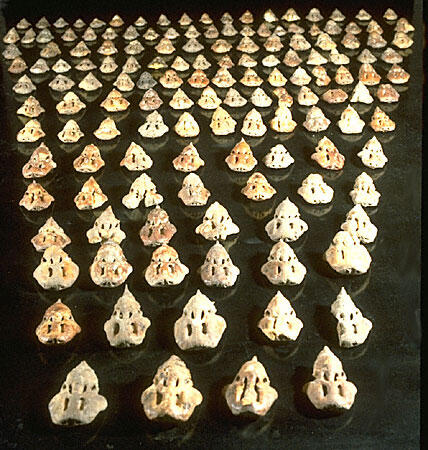Also recovered from Balakot were the distinctive neurocrania of the dhoter fish (Pomadasys hasta). This fish account for almost 60% of all the fish remains at Balakot. Neurocrania and other cranial remains are concentrated in very distinct areas of the site. Based on the ethnographic research I conducted, this pattern is consistent with a commercial operation for drying.
The neurocrania of this species is unique in that it exhibits a form of hyperostosis or swelling of the bone. The neurocrania is composed of several other bones, but in this case, they have swelled and fused together. Hyperostosis is common throughout some species of fish such as the family Carangidae and Haemulidae. Specialists are at odds on the cause of this phenomenon, but it has made this species of fish particularly identifiable.
While many of the dhother neurocrania are complete, many more are fragmented. Originally, some faunal analysts suspected that the fragmented bones were the result of butchery, particularly with the use of a cleaver-like knife. This is very similar to what we see today in the local markets of Karachi. However, on most of these specimens, there is no evidence of crushing or cutmarks. Under the stress of compaction from the being buried, these bones break in a very predictable manner along the fusion lines of the original bone groups, particularly along the center line of the bone.

